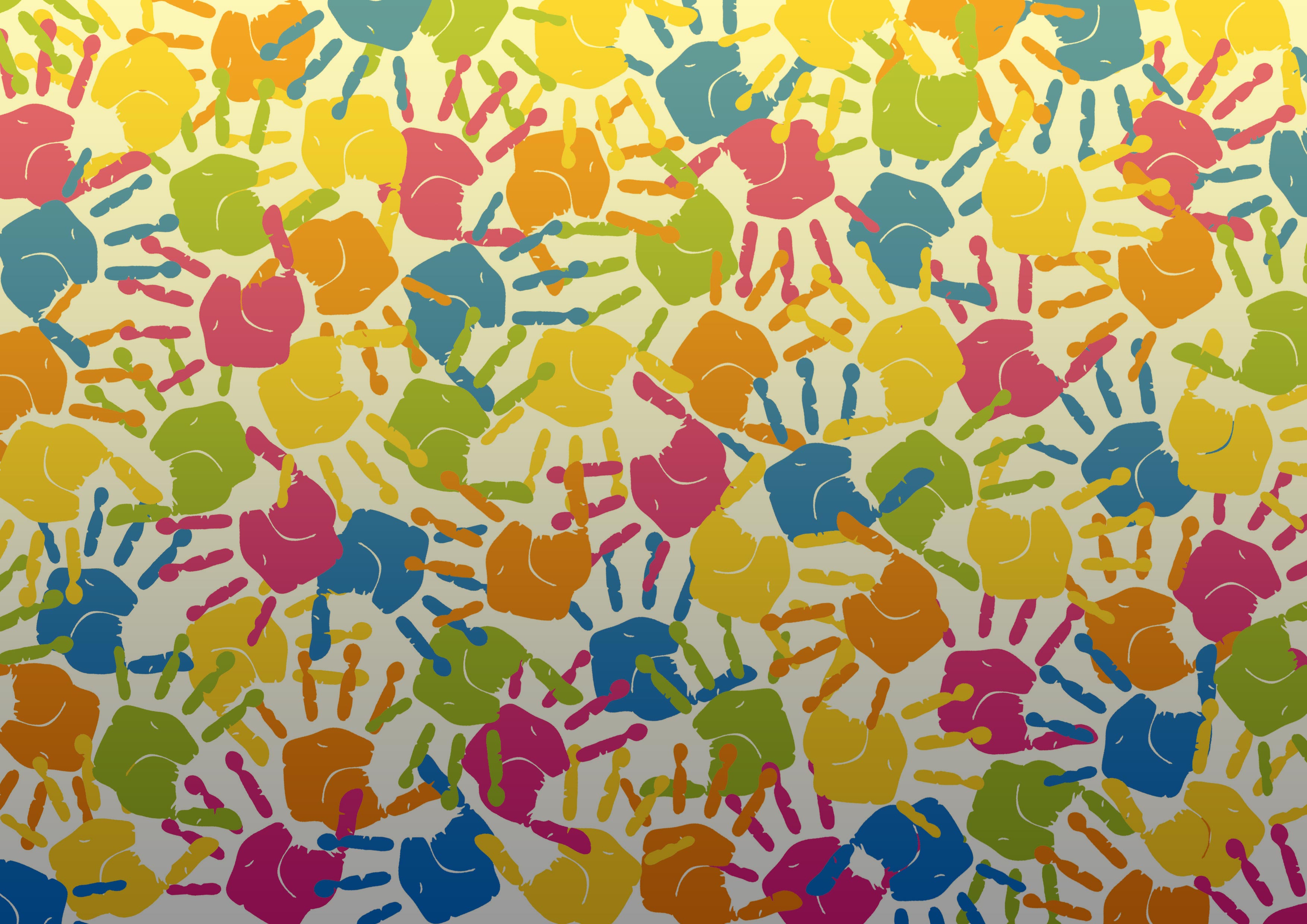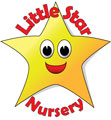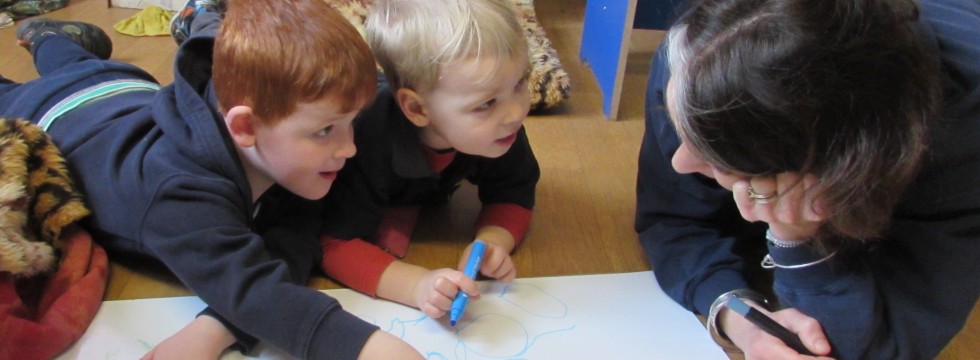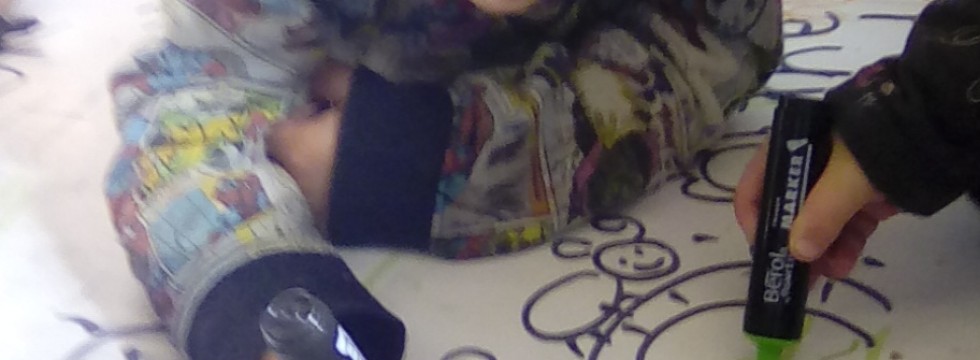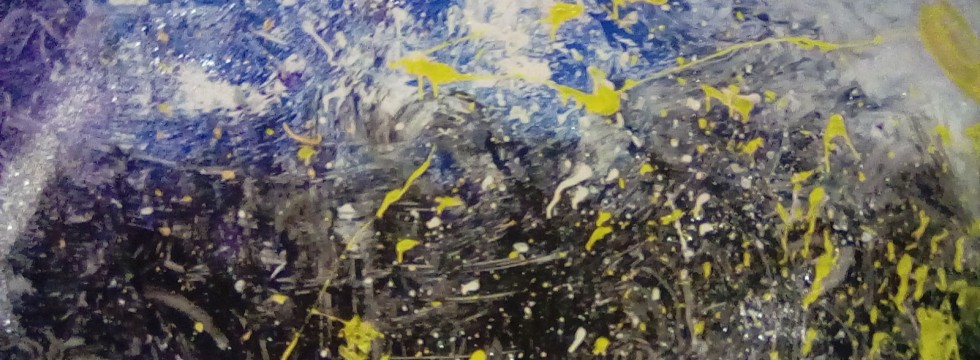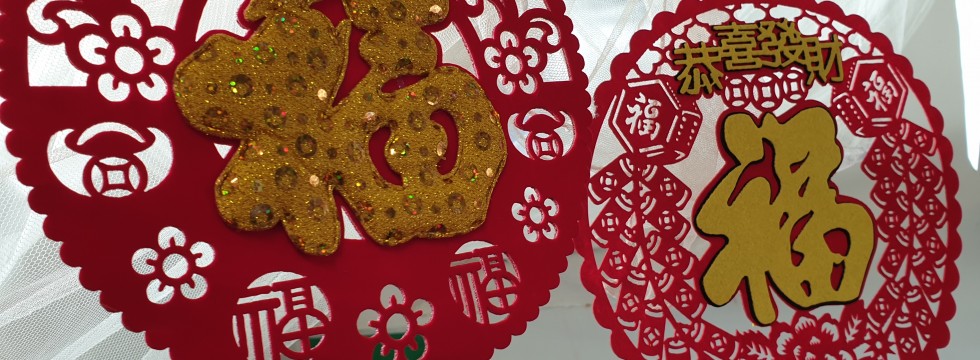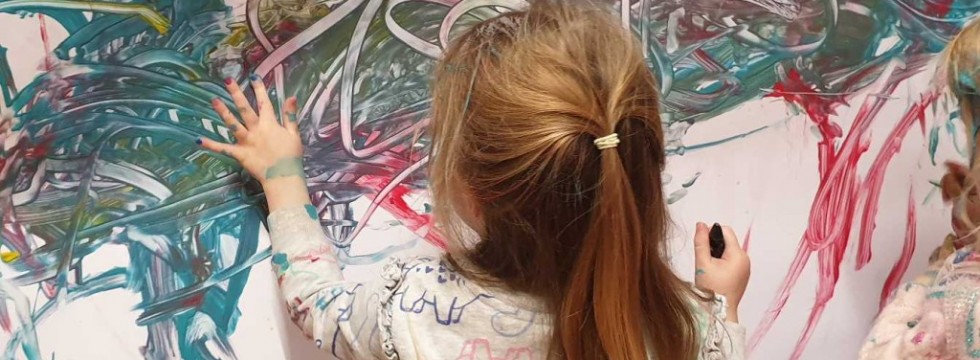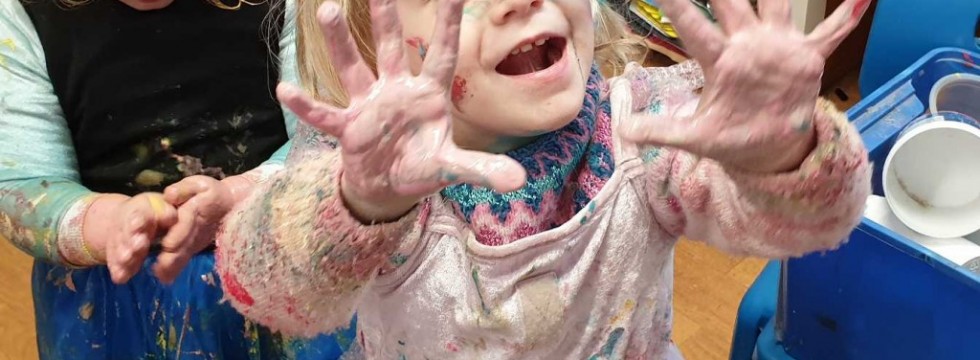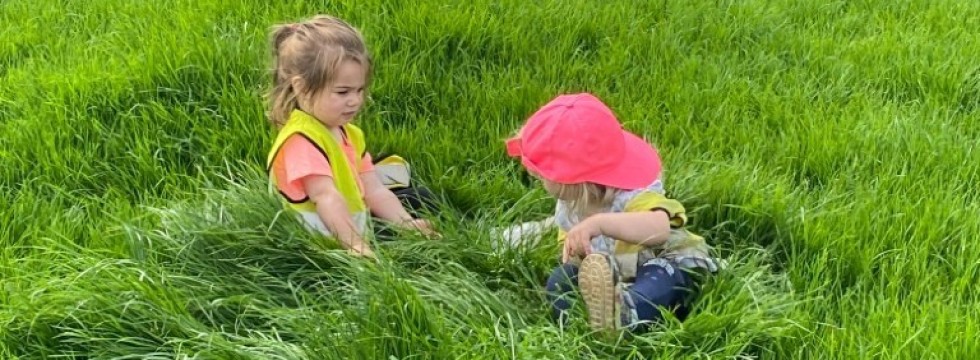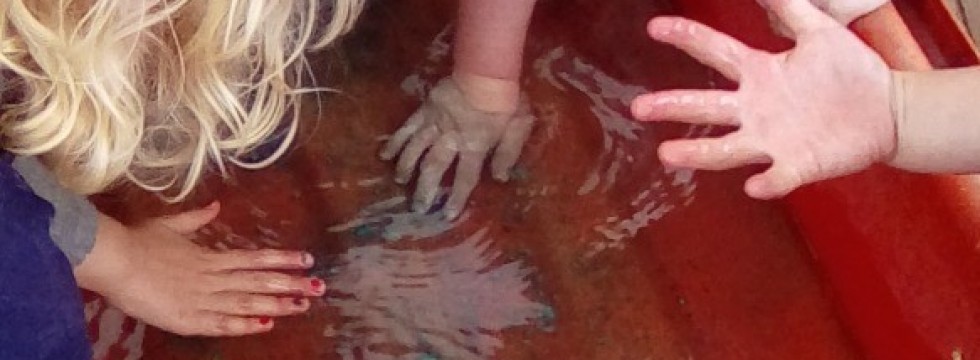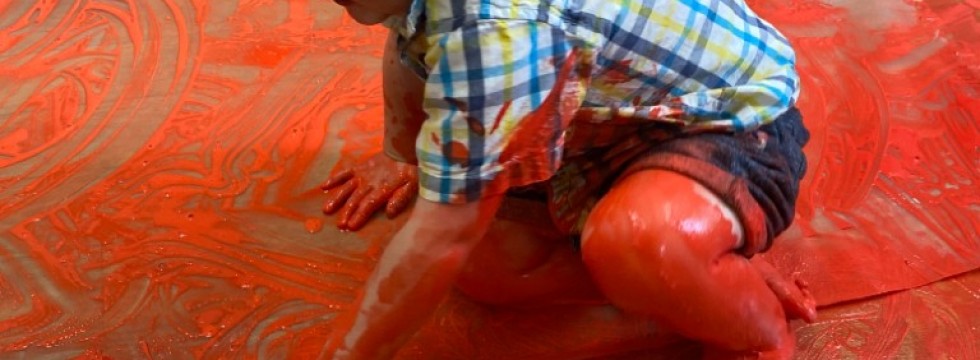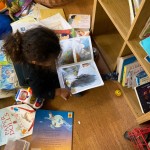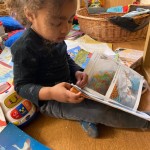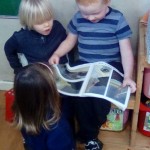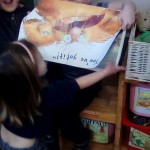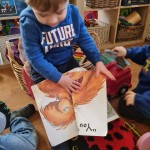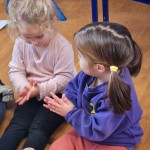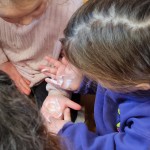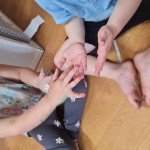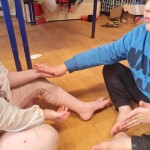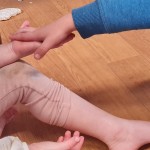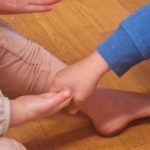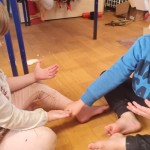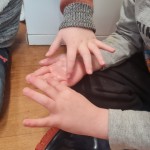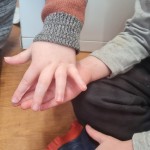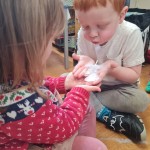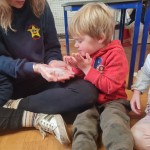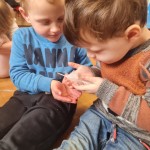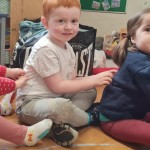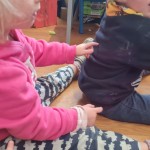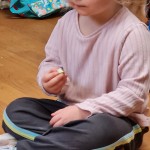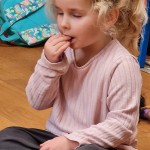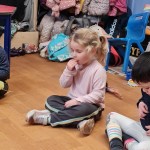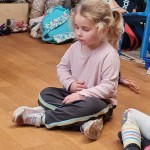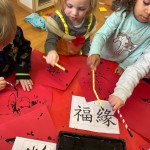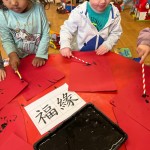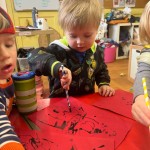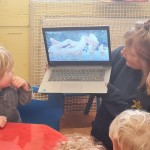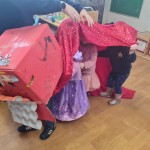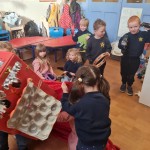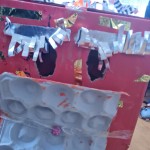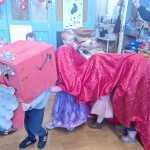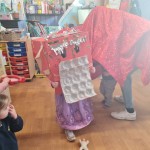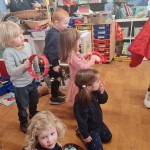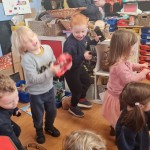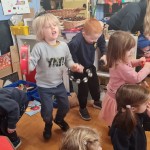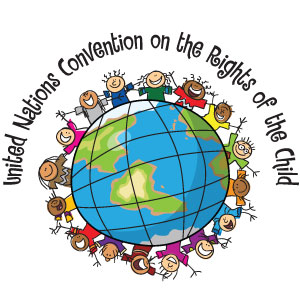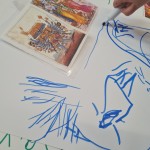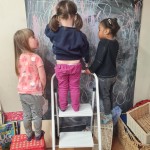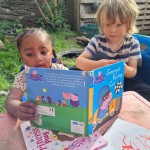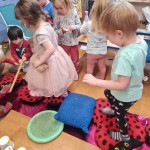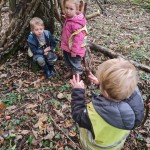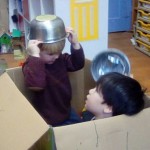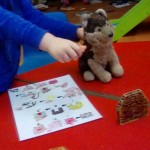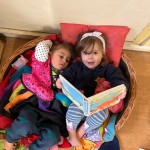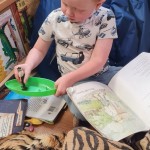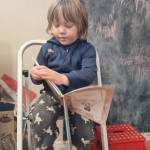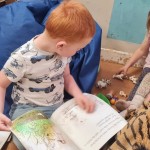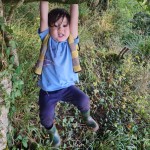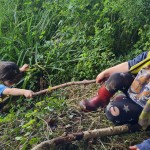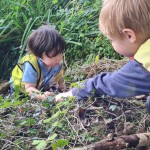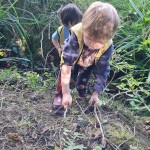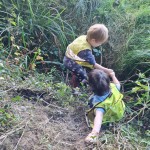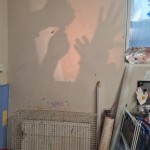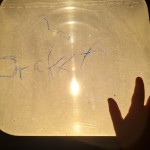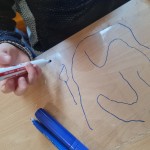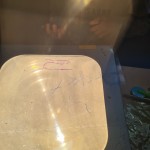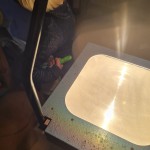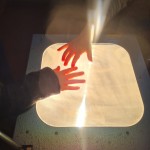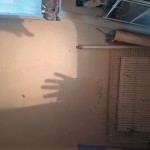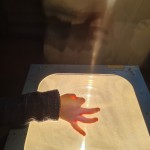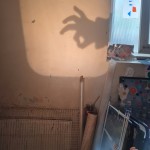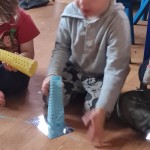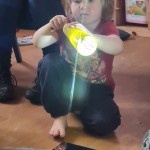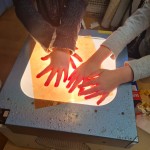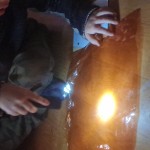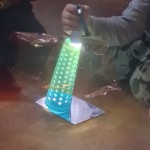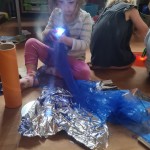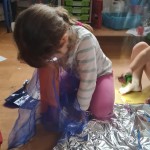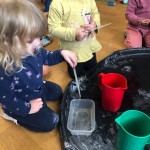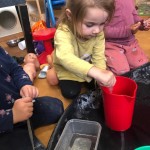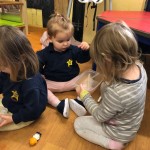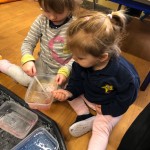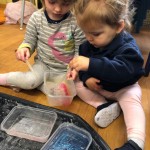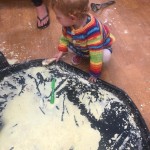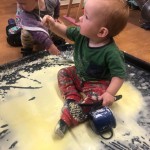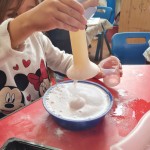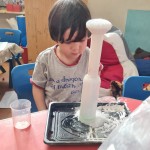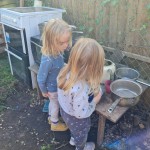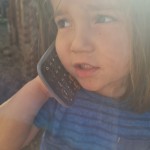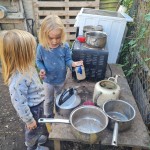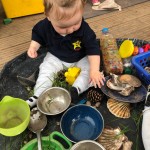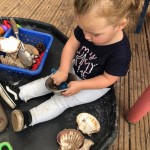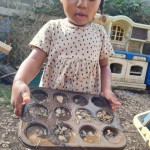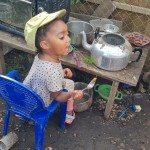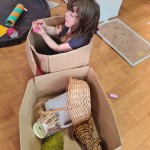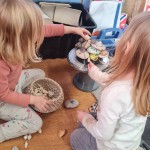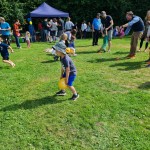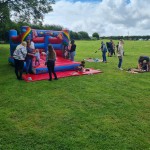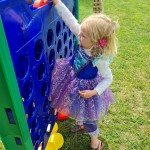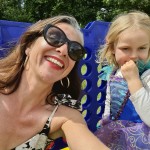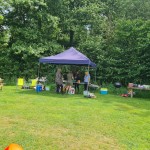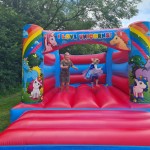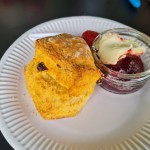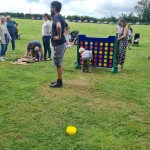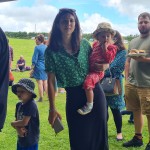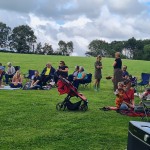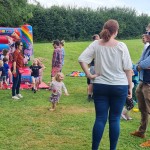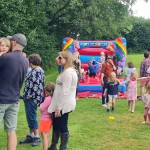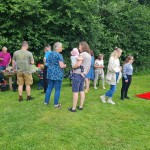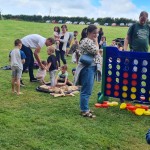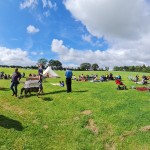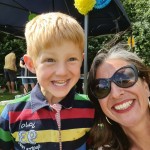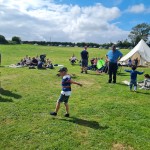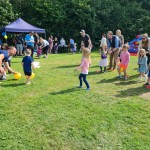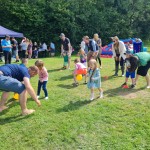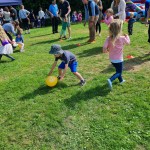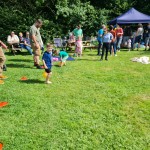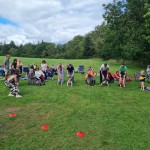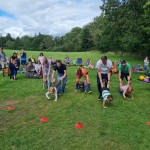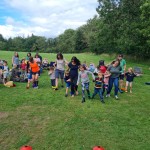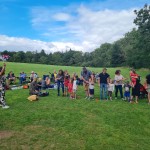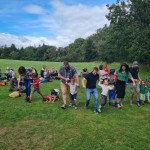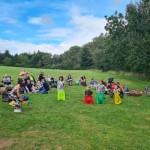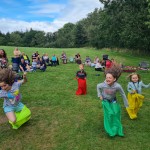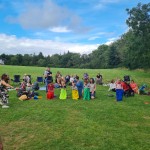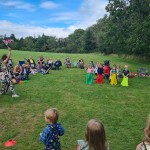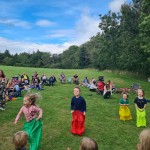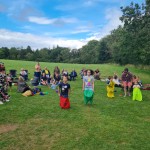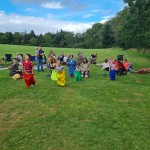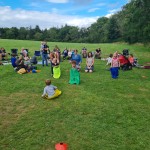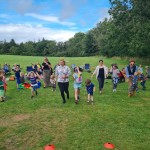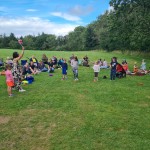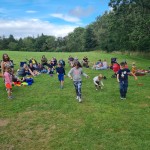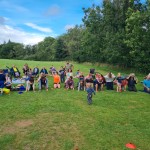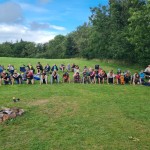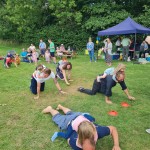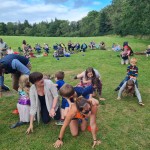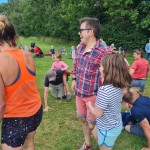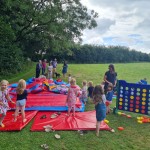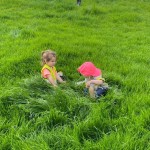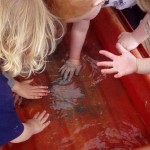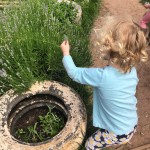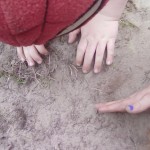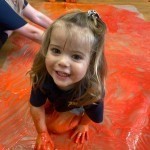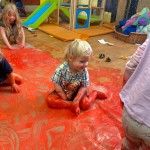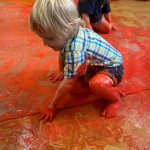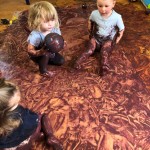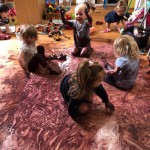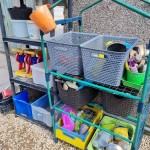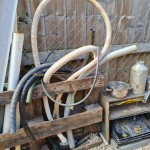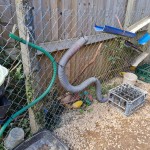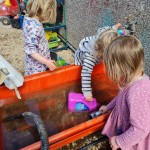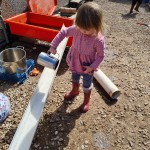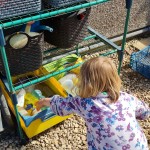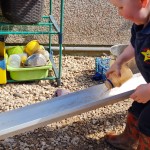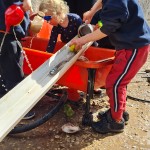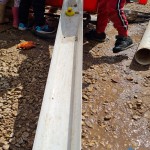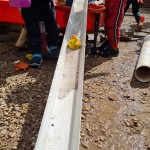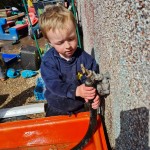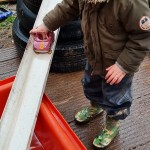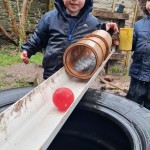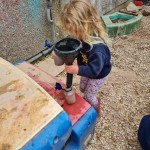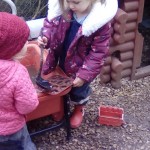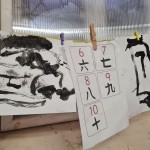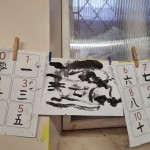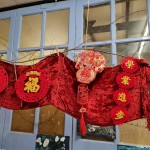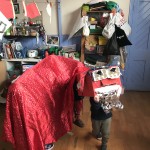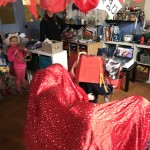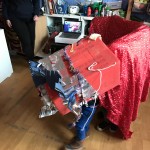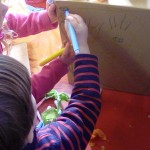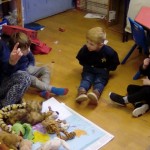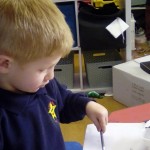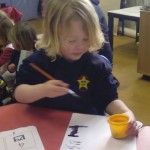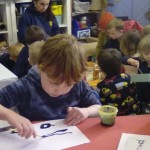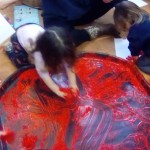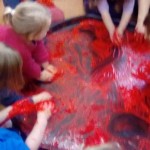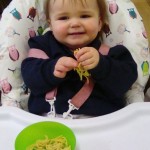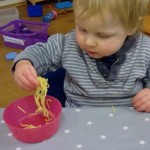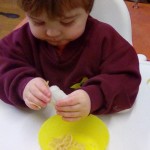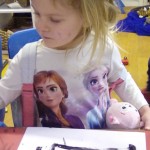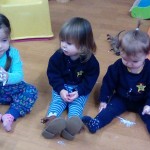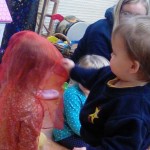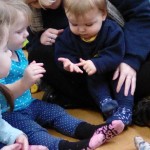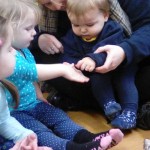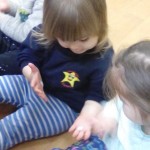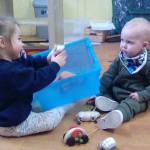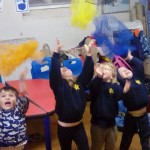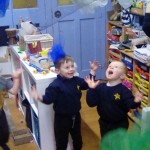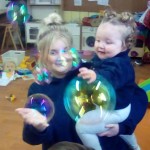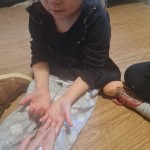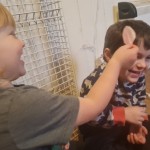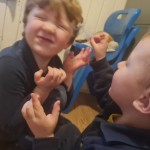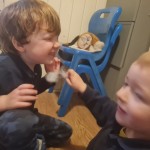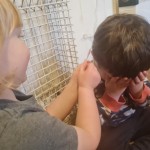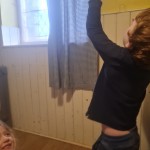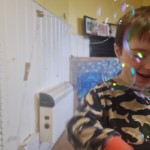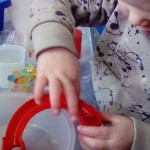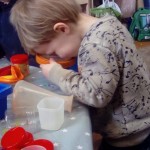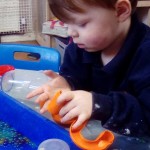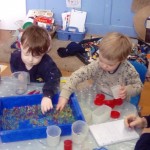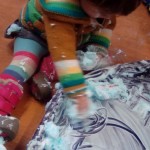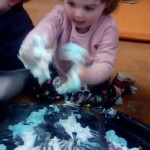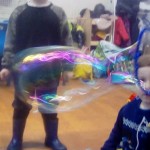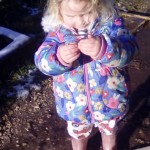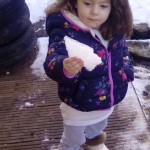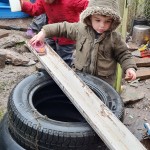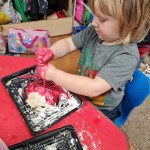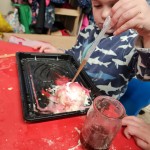Understanding the world
We are now nearly a year into working under the new EYFS reforms and thought we would review how we are meeting all of the education programmes (their term, not mine!!). So let’s start with ‘Understanding the world’.
‘Understanding the world involves guiding children to make sense of their physical world and community’ (DfE Development Matters).
So let’s take a snapshot of how we support this enrichment for all of our Little Stars.
As you know, we make the most of embracing the community we live in and this involves taking a close look at the environment, at bugs, creatures, crops growing in the fields or how the colour of leaves are changing on the trees. We study the patterns we find, what seeds are and what they actually do (both planting in the garden as well as blowing a dandelion clock.

We talk to the children about the bugs we find outside: extending all of our knowledge as we discover more about where and how they live, discussing how we care for the natural world around us.
Community also spreads to the village we live in: visiting the park, the farm shop or even shopping in the co op. As we walk around the village we can discuss features we see: the church, school, a tractor or animals in the field: describing and asking questions about things we see.
We also want to extend the children’s awareness to how people live, both each other and our festivals and customs as well as those of people who may not share the same religion, family make up, gender or beliefs as us. We both challenge inequality and celebrate and promote diversity and inclusion.

What’s so scary about a woman who went out to pick beans?? Well, when she finds a hairy toe in the vegetable patch the story becomes far more horrific! Some stories have the power to capture children’s hearts, minds and imaginations and ‘The Hairy Toe’ is absolutely in that category. Children love the thrill of being scared, of being delighted and of laughter and this book does it all. As well as enjoying having it read to them we are seeing so many children selecting the book themselves to read, either to themselves of aloud with friends. Below is a small gallery of such independent reading as well as a narration from one of our Shooting Stars. You can also share Julian Clarey’s telling of the story using the video link below (if you google YouTube there are a few variations you can select, depending on how brave your children are!). Enjoy!
“The lady picks some peas up and a hairy toe in her garden. Brings it back home and there’s a big bang. Brush her hair. Where my hairy toe? In her bed wind blows, something tries to get in. It gets closer and closer to the door, chimney rumbled, door creaks. Something over the floor and up the stairs. Where my hairy toe? You got my hairy toe. The End”
Theraplay, nurture and mindfulness
“What wisdom can you find that is greater than kindness?” ~ Jean-Jaques Rousseau
A pedagogy of love and kindness is at the heart (excuse the pun) of all that we provide for the children at Little Star, for what use is being able to write without the capacity to write kind things? The practices and theory behind ‘theraplay‘ and incorporated into this, ‘sunshine circles‘ embody this key message for the importance of nurture in the child’s world. With Kate as a level 1 trained practitioner, Chloe and Sarah have now begun training in order that they can fully deliver the same practice through sunshine circles. We incorporate these games of sharing, consideration and above all trust and respect for each other into routines such as the morning timetable, circle times and the principles underline how we treat each other.
Alongside this we weave times of mindfulness: allowing the children to have that valuable commodity of time, which is something we undervalue in this present day society of fast food, fast fashion, targets and striving for a goal forever out of reach. This might be given back to the children out in the fields: lying back and watching the clouds pass, listening to our breathing, watching falling feathers, bubbles or taking time to munch a piece of fruit, taking time to consider the taste and other senses as we do. Time and kindness. Two simple, free things but so often so over looked.
Chinese New Year 2022
Celebration and recognition of other cultures, traditions and festivals is essential to children’s awareness of how the world lives, differs and also is the same as us all. Hence this week all the children have engaged in a range of activities from looking at and trying different paint techniques to do Chinese writing, making lanterns and creating our own dragon to join in with the dragon dance. It has involved participating in Chinese traditional music as well as watching videos about how celebrations are carried out both in China and, importantly, parts of this country as well. We have used maps to look at where China is as well as finding out more about tigers and the story of the Chinese Zodiac (as the link below).
Active listening
How do we really engage with children? how do we really let their voice be heard and listened to? In accordance with the UNCRC, we are taking a look at and examining how we respect article 12:
You are all used to the manner of us taking observations about your children, sharing pictures and opinions and we request your permission for us to do this on starting nursery. But what about the ethics of the child? What about their permission in allowing us to use our own authority to write about and for them? Therefore in an effort to make children co authors and collaborators in their own stories, we will be sharing the observations we make with the children, asking their permission to send the pictures to their family and actively discussing what we write with them. We would also encourage you to do the same when you read them at home, even for the non verbal to share the images with them. Where your child has any comment about what they see, please do give them their voice on the observations too. We want observations to celebrate what the child is living and accomplishing.
What are they telling us?
 “Terrible Twos'”/ “toddler tantrums” / “Tweenager”: just some of the terms we casually use to explain away or to justify, or to blame a certain “unwanted” behaviour in children. But unwanted and unacceptable based on whose “rules”? Is that ethical to give a blanket descriptor (in the way that a man might blame “female thinking”). Such explanations do a disservice to what the child is telling us and rather than using such slogans to cast blame without a context far better to examine what the children are telling us. The response ‘no’ is often in response to the child’s feeling of injustice when they feel an adult is imposing their authority upon them without reason, or explanation. So let’s try to re ask and re enagage our children in a collaborative manner that respects their worth and dignity and look at their inability to do a certain thing as a response to how they are questioned rather in their limitations.
“Terrible Twos'”/ “toddler tantrums” / “Tweenager”: just some of the terms we casually use to explain away or to justify, or to blame a certain “unwanted” behaviour in children. But unwanted and unacceptable based on whose “rules”? Is that ethical to give a blanket descriptor (in the way that a man might blame “female thinking”). Such explanations do a disservice to what the child is telling us and rather than using such slogans to cast blame without a context far better to examine what the children are telling us. The response ‘no’ is often in response to the child’s feeling of injustice when they feel an adult is imposing their authority upon them without reason, or explanation. So let’s try to re ask and re enagage our children in a collaborative manner that respects their worth and dignity and look at their inability to do a certain thing as a response to how they are questioned rather in their limitations.
Spring term 2022 and the United Convention for the Rights of Children
With the revisions to the EYFS in September, Early Years settings have been encouraged to consider their “curriculum” and what it means for the children. As I have discussed and demonstrated to some degree on pages of the web site, we aim for an ACE curriculum: An Active and creative exploratory experience. Alongside this, in respect for all it does for children (the clue really is in its name) I want us as a setting to adhere to the United Convention for the Rights of Children as a model that addresses the very basics of child care (the right to protection, development, education, protection from harm) as well as the ultimate goals of education (Article 29) to be:
” [To] develop every child’s personality, talents and abilities to the full”
This means we must listen to and respond to how the child is communicating to us and expressing themselves. For the pre verbal, non verbal or even those children who do not need talk to be the key form of expression, we must, as adults, be active listeners and observers of how each child prefers to “speak” to us, even if that means respecting their silences. We must allow sufficient opportunities to use a variety of forms: mark making, dance, paint, small world, actions, physicality, touch, gestures, music, story, song, puppets, dolls, clay…the list must be limitless in order to give each child their right to freedom of expression.

Being permitted to explore in their own self chosen manner ensures respect for their thinking, respect for their own sense of Self

some children benefit from having another medium to “talk” through such as using small world characters or soft toys, dolls to tell their stories through
As well as respecting their own individuality it is also important to respect that we live as a social community with and alongside others and the second part of this article really speaks to me and what we aim to achieve for our children at Little Stars:
“[Education] must encourage the child’s respect for human rights, as well as respect for their parents, their own and other cultures, and the environment”

Our nurture group sessions are embedded into the setting’s routines to ensure a feeling of care and appreciation for each other

Spending time out in the natural environment allows us to appreciate and care for the world around us

Our commitment to sustainability helps the children realise the importance of caring and looking after this planet for us and those in the future
And finally we should not forget that this document states that it is Rights of every child ‘to relax and play’ (article 31). Play isn’t a luxury, it is a RIGHT that we respect and will never forget the importance of. And remember, this a convention not just for Early Years but for every child, for which the definition is everyone under the age of 18.
Hopefully over the course of this term we will be able to show you how we respect and give each of our Little Stars the rights to expression and play that they are entitled to.
A summary of the convention is below or follow the link for the full document.
An active literacy rich environment
There may still be schools who have “literacy hour” but how and why should literacy be confined to just an hour? Literacy should, and at Little Stars is, an active part of a child’s everyday and every hour’s experiences. We provide continuous opportunity for children to read and tell stories: books aren’t just read “to” children, but shared with them, encouraging active participation so they can then share the stories independently and together without adults. Props are used for active learners who like to have something to make links with, story maps tell the story through simple pictures and large scale resources are provided to actively bring stories to life, in the nursery or out in the woods.
Similarly to draw and write should never to contained to a pen and paper, but in gloop, with chalk, in sand, with paint or with the spoken word. We hang from trees or paint the walls in order to strengthen the muscles for writing. We bring literacy to life; actively.
Active relationships and active knowledge
Knowledge that is merely “deposited” to children becomes static and didactic: it is received on a greater or lesser scale by children and the “meaning” is limited to that instance in which it is given. It assumes that the giver of that knowledge (the adult/ the teacher) is in control, has the power and is all knowing. What we believe at Little Stars, is in knowledge that is gained through relationships and experience.
This is the reason we put so much emphasis on a “hands on” curriculum, that allows children maximum sensory experiences with nature, with the elements, with ever changing materials and situations. We guide the children but only as much as they guide us as we not only listen to their ideas but follow and respond to their fascinations. This is the right of every child.
An ACE curriculum
Our Curriculum is based on the three themes of being Active, Creative and Experimental (or exploratory). To this end we invest our thinking and planning in creating opportunities for children to use their own active thinking and creativity, experimenting with combinations and new ideas. Experiments, open ended materials (or loose parts as a term and concept) are key to provide questions and the power of the new, rather than setting children up for having to arrive at answers with a clear right or wrong conclusion.
And so this term all of the children have played with light and colour, got hands on and messy, explored properties of mixing materials and creating both actual explosions and explosions of the mind. In order to maintain this environment of potential and new awakenings we are always challenging ourselves and testing our creativity and skills as practitioners to create the very best for the potential of each child.
Summer 2021
Well, weren’t we blessed with the good weather on Saturday? As they say: the sun shines on the righteous! And what a wonderful way to spend the end of this year: all together. It seemed like the perfect marker of us coming out of a year of lock downs/ isolations (which I am very aware is still upon us, and prevented some attending this weekend). It was joyous to see the children so free and fun filled, being with their friends, on the bouncy castle, and for me the highlight of the day: sharing our sports day games with friends, siblings and family. The last “ride your parent” race was truly heart lifting ![]() Well done to those parents who threw themselves into the spirit of the day.
Well done to those parents who threw themselves into the spirit of the day.
Also, thanks so much for your generosity: of raffle prize donations, raffle ticket purchases as well as food and drink consumption (even if we misjudged the balance of burgers to pimms! Next year we will ensure a better stocked bar!). We will be able to use this money to enhance provision and resources for your children at nursery.
Apologies for the aborted pre school presentation, caused by an unexplained disappearance of presents but well done to those children who kept it all together and you will not be forgotten!
Here below is a full gallery of the day’s fun.
Enjoy the rest of the Summer and I will be back in September to introduce the new term.
More than just messy play
Most of you should know by now that our advice never to bring your children in clothes you aren’t happy to be stained with paint, mud, gloop or any such substance, is one to be taken seriously. We embrace messy play literally hands on! But why? And let’s refer to it now as sensory play. But again, why do we do it? And this is the question that I probed a member of staff with, after she had turned our children red. To start making marks? To experiment with different media? To observe different effects and patterns they make? To be socially interactive? To have fun? All good and relevant answers. Yet sensory play offers a very crucial element to children’s early experiences as they encounter a new phenomenon all on their own terms.
The intended outcome of one of the activities shown in the gallery below was to experiment with making marks across a paint covered piece of material: rolling balls across. Yet in no time it was the children themselves who were rolling across the paint. These opportunities to explore with no barrier are more than just making marks or learning about mixing paint. It allows children’s brains to develop as they make connections “first hand” as they feel, touch, taste, smell. It links cognitive pathways in the brain which helps the child to then build up to more complex learning tasks as they continue their journey. So, remember next time your child comes home looking like an oompa loompa, or your washing machine is put on hot yet again, that you are aiding real thinkers and well rounded individuals of the future.
Spring term 2021
Water Play = learning.
I dislike the term “learning through play” and would rather say that that play IS learning! Never more so than with water. Have you noticed how children are drawn to it? We all know they have to splash in a puddle, throw a stone into a stream…just to see…to see what they can make happen. It’s the same with water in the garden. Come rain (when we don’t need the tap!) or shine, the children select water to explore with in so many ways. And because of this desire for self exploration it is important to provide a wide variety of different tools and resources to experiment with:
Pouring: from cups, jugs, watering cans with different shape nozzles, transferring into other containers, funnels, with different size openings. This develops concentration, hand eye co ordination, the science of velocity, capacity and volume. Trajectory: sending water, a ball, a car, a duck down a tube or piece of guttering allows thinking about size and velocity; joining together pieces of tubing, working out how to get water from one place to another and that it cannot go up hill! Working together, talking about what they observe and working out different ways of doing something. Imaginary play: water becomes a cup of coffee, soup, lunch. Mix it with mud, sand , stones and it it transformed to something else. And this is just the beginning ! So….throw away the activity books, the work sheets and turn on the tap ![]()
To create an inclusive ethos, ‘where every child can shine’ is one of our utmost aims at Little Star Nursery. Anybody can teach a child skills of holding a pen or throwing a ball but without the fundamental understandings of what it is to be a sharing, caring member of society all such skills are worthless. Values of kindness and acceptance cannot be taught in a single lesson, nor given through a worksheet, but are embodied in attitudes, in the way we nurture, listen to and respect one another. To this end, the most valuable resource that we give the children is the care of our staff, but there are also other underlying messages and practices that we give to all children.
One such message is that of acceptance of all people, and an understanding of difference. We aim to celebrate festivals not in a tokenistic way but to explore the meaning of them to different people across the world in an effort to normalise other ways of being and of thinking. Celebrating Chinese New Year this week allowed the children to learn the story of how Chinese New Years are named after a particular animal, we found out where the country was on the map, looked at and tried our hand at Chinese writing as well as tasting different food and making some spectacular Chinese dragons:watching and then performing our very own dragon dance.
Our 3 golden rules (as below) come from the Sunshine Circles which form part of the Theraplay institution. In these children accept the nurture and lead of the adult as they display and share games of love and trust with the children. They then in turn use these with each other. The games allow time for listening to each other, for respecting each other’s space and needs as well as of course having fun. We build them into the core structure of our day and so they become again a chance for children to listen to and see the value of care in everything we do.
Finding and following fascinations
As a team we are trying to explore how we can follow children’s fascinations and interests and scaffold learning by providing further layers of experience. We hope to offer these in observations rather than adopt a linear and sterile “next step” in learning which may lead to a more skills and knowledge based curriculum rather than one that is rich in wonder and magic. Much of this wonderment is met with accidentally and we will be led to it by the children (which is why we place so much value on the freedom of experience that the outdoors gives), but we can also endeavor to offer many open ended and sensory experiences that allow children to take the play in whichever direction they choose. Opening doors and questioning why or why not a child can do certain things provides an opportunity for new learning: watching a child observe how the cornflour gloop dries on his trousers is something that couldn’t be felt if we worried about keeping the clothes clean for example. Stopping the child attempting to climb in case they fall prevents new possibilities and self belief. This is what will build strong, healthy and enquiring minds for the future: those who are prepared to push boundaries and challenge.
One key theme that will umbrella all of our work at nursery is not only in response to the Ofsted requirements, but is our response to where we find ourselves in the world right now. No one can fail but be conscious of the instability and uncertainly surrounding our children, on a global scale, with headlines warning us of dying oceans, climate change, crisis of funding in education and general political turmoil. It would be understandable to feel overwhelmed and disheartened by such a glimpse of the future but we are determined to turn this on its head and contribute to promoting a positive future for our Little Stars.

Equality is everyone’s responsibilty
Firstly we can embed our interpretation of ‘British Values’ (as a term in itself I personally dislike. More they should be every human’s rights)
We need rules, if only to have something to rebel against! Young children in these Early Years take solace from routines that give them a feeling of security. We implement our ‘golden rules’ that teach children basically how to get along with everyone in order to have fun. Laws are made to achieve fairness to a wide society in order that no one person can dictate. Rules in this way then need to be explained to be just: “you shouldn’t run inside because you can knock into someone and hurt you both”.
When it is hard to see this in action in practice these days, no time is it more appropriate to be democratic in the nursery. This means considering each other’s opinions, listening to each other, sorting problems out together, considering things from every angle and point of view. In short showing empathy to each other. We do this by allowing freedom of choice and to use strategies such as conflict resolution and emotion coaching.

Respect and tolerance for each other is key. We welcome all families and understand different cultures and beliefs. We try to embed these ideas into children’s lives at Little Star in a meaningful way without being tokenistic: being mindful of the diversity of images that we might use or how we present stories (having two mummy bears and ensuring the 3 little pigs are a mixture of girls and boys). Celebrations and festivals are examined and the stories behind them, rather than ticking a multi cultural box by just making a lamp for Diwali. Children’s individuality is addressed through our planning, assessments and observations and through discussions with the family and yet children learn how their own unique ways of learning have to work alongside other peoples’. We are not a one size fits all but we strive to fit together and to be “in”clusive rather than create “others”.


In addition to being kind to each other, we are looking after the world in which we live. Steps we are making is to ‘say no to plastic’ and source all new resources that are sustainable (we will recycle donated or second hand plastics).
